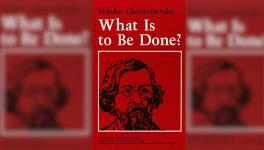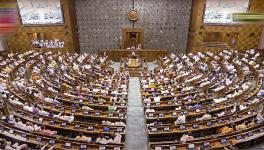Is it Possible to Foment Mass Hysteria in Indian Politics?
Historically speaking, totalitarian and fascist regimes have only been able to gain complete control over a country after they could create mass hysteria. Hysteria is a psychological condition caused by the inability of an individual to face the reality of certain event/s that took place in the past. Sigmund Freud, the father of modern psychology, referred to hysteria as “emotional excess” caused by the trauma of memory. Trauma essentially involves a deep-seated inability to come to terms with a past injury. In their classic work, Studies on Hysteria, Freud and his collaborator, the physician Josef Breuer, trace various physical disabilities, including paralysis, to unresolved traumas repressed by the suffering individual’s subconscious. Later studies extended their ideas to argue that even collectives can undergo traumas. When “shared symptoms develop in a circumscribed group of people following ‘exposure’ to a common precipitant”, it can lead to mass hysteria—or epidemic hysteria.
The current regime in India and its success also depends on its ability to create mass hysteria. But can hysteria be created in culturally and socially diverse nations such as ours? Now the core of the right-wing activists does appear to suffer from conditions akin to hysteria, especially on two counts. One is the trauma of Partition due to the extent of violence witnessed at the time. A trauma like this one can be made all the more potent when combined with the imagination that Muslims are smaller in numbers, and a weaker lot, socially and numerically—much like a younger sibling or a poorer neighbour. The idea of violence wreaked by a “weaker” sibling, who was supposed to be loyal, makes the event traumatic.
The Partition can also become traumatic when one is made to imagine Muslims as “outsiders”, and therefore as a people whose allegiances lies elsewhere, but who still inflicted violence on the majority Hindus and managed to Partition the land that did not “belong” to them. These are ideal conditions for hysteria, which is essentially a memory that remains painfully unresolved in the collective subconscious.
The other historical condition of trauma remains caste. The loss of political power with the inclusion of princely states into India meant that the erstwhile aristocratic class, which was caste Hindu, experienced loss of power without adequate compensation. This, too, is etched in the collective consciousness of India’s ruling elite. Added to this is the anti-caste assertion of Dalit-Bahujans, who, in the conservative social imagination, continue to be perceived as inferior. They are seen to be “polluting” the “racial” superiority of the nation. This, again, is a potent ingredient of hysteria, and it brings India much closer to Germany during the Nazi regime, where the search for “Aryan” supremacy ultimately led to severe persecution of Jews.
This combination of religious “betrayal” and assertion by “undeserving” castes is the potential historical memory that is still repressed in India’s collective subconscious, and it creates conditions amenable to spark mass hysteria. A repressed subconscious is like a cultural resource that can provide conditions to mobilise hysteria on various issues, provided they trigger memories of an injury. Hysteria requires a consolidated and highly-fossilised memory to act as an inflammable spark that can set alight a trigger.
Now the questions that seem to plague totalitarian regimes are: can hysteria be triggered in a highly diverse society like India’s? Two, conversely, can a totalitarian project find legitimacy without setting off mass hysteria?
In fact, part of the crisis of the current regime is its repeated failures to create hysteria. The last failed attempt was during the election to the Delhi Assembly. The last few days before the polling were a textbook experiment in creating conditions of hysteria. Resounding slogans of “goli maaro” tried to trigger a lingering threat of “Muslim takeover”. The anti-CAA protests were highly visible with the Shaheen Bagh movement still active and spreading throughout the city-state and the country. Many chief minister of BJP-ruled states joined the Delhi election campaign at this point, and veiled references to the “Muslim threat” were made, even by the Prime Minister, as the campaign reached its crescendo. Yet it all came to naught.
The Delhi election will remain etched in memory for being by far the most potent experiment in generating hysteria gone wrong. This election represents a glaring failure to spark hysteria. It challenged the understanding of the right-wing forces in India that common sense can always be moulded to create hysteria. What we witnessed, instead, was common sense prevailing over hysteria. “Mere” promises of basic welfare can betray the allure of hysteria, we learnt during this election. We also learnt that Muslims are neither socially nor politically dominant enough to create a “permanent” state of fear and anxiety. Memories of “a historical injury” can still be conjured up contextually, but they cannot be sustained. They can trigger and provide legitimacy to organised pogroms in localised spaces, but may not work for a larger spatial imagination over a period of time.
Delhi proved that even contextual hysteria cannot be whipped up if other social imaginations prevail. For hysteria to work in conditions where alternative narratives exist, would require complete death of the social imagination, so that the promise of a better life, hope, and any sense of a collective are all decimated. But can such conditions be created? Framing those who stood against violence in police and legal cases related to the Delhi riots is another experiment in creating hysteria. These cases aim to counter the dispersion of the potential conditions of hysteria. Another question looms: can the ongoing economic crisis, if it widens and becomes more deep-rooted, provide the social conditions ripe to generate hysteria?
The second repressed emotional trauma in India is the visible attempt to filter caste assertion as the symptom of a “divided Hindu society”. That is, there exists a certain “transference” of the injury caused by this assertion into a so-called conspiracy to divide Hindus. Fossilised caste egos, in other words, are still a potent source of hysteria. The unbearable pain of “inferior” populations challenging those “naturally” bestowed with divinely ordained superior status is at the root. The challenge here comes from electoral compulsions—the numbers game. Does accommodating non-elite castes, even symbolically, dissipate the conditions necessary to generate hysteria, or can the injury caused by the very compulsion to accommodate diverse social groups be converted into an ingredient for hysteria? This is where backward class/caste mobilisation becomes indispensable in a country like India. Mobilising the fossilised masculine ego of backward caste communities can provide the necessary imperative.
This, however, is partly challenged by intra-caste conflicts within the dominant castes, as recently witnessed in Uttar Pradesh, where the old Brahmin versus Rajput narrative is being resuscitated. To add “insult to injury”, there was the attempt to counter-appropriate this conflict by the Dalits and the dominant backward castes, who have offered to build a statue of Parshuram, the god-like figure revered by Brahmins.
This kind of caste assertion can be weakened through the use of rhetoric about Hindu unity, as it is by diluting provisions for reservations, or by going so far as to not implement reservations, or even sub-dividing Dalit and OBC constituents into smaller caste units. But will all of this create conditions of absolute dominance, enough for the elites to set the terms of reference and create a mass hysteria along a single shared memory of a past injury? One wonders if political accommodation and social hysteria can go together. If they cannot, then no other means remains for a totalitarian regime to create and sustain mass hysteria in India.
The author is associate professor, CPS, JNU. The views are personal.
Get the latest reports & analysis with people's perspective on Protests, movements & deep analytical videos, discussions of the current affairs in your Telegram app. Subscribe to NewsClick's Telegram channel & get Real-Time updates on stories, as they get published on our website.
























